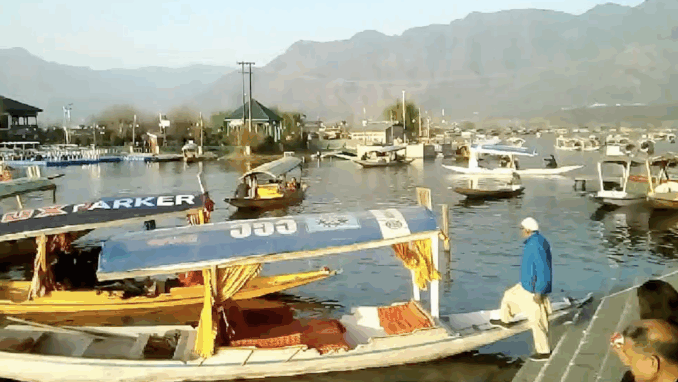
© Always Worth Saying 2025, Going Postal
Never travel to a country that’s a funny colour on the map, or worse still, described by different coloured diagonal lines. Disputed territory is not only the cartographer’s nightmare, but also that of the traveller. Situated in the strife-torn north of the subcontinent and encompassing part of the Tibetan Plateau, Kashmir is a picturesque region in northern India.
Bordered by Pakistan and China, and nestled in the Himalayas, it is renowned for its mountains, valleys, rivers, natural beauty and ongoing political tension, which in the past two months boiled over into near all-out war between two nuclear powers.
The total area of Kashmir is approximate to the size of the United Kingdom and includes areas administered by India, Pakistan and China. With territorial disputes and differing administrative claims, it is divided by Lines of Control (LoC) rather than internal borders.
By area, about half is Indian administered, with two-thirds of the remaining being Pakistani and one-third of the remaining being Chinese.
The north and extreme west is administered by Pakistan, where 4.6 million people live in the provinces of Azad Kashmir and Gilgit-Baltistan. It is from Mirpur in Azad Kashmir that the lion’s share of Pakistani immigrants living in Britain originates.
Far from being a distant land of which the rest of Pakistan knows little, the Kashmir border begins only 28 miles from the Islamic Republic’s capital of Islamabad.
Likewise, on the other side, New Delhi sits only 273 miles from Kashmir, in an India which is 2,000 miles from north to south. India controls the south of Kashmir and its 13 million inhabitants in the union territories of Jammu and Kashmir and Ladakh.
A note of caution – all of these internal borders and naming conventions are contested in a never-ending dispute over sovereignty. A dispute complicated further by China, as the People’s Republic occupies Aksai Chin and the Trans-Karakoram Tract to the extreme northeast.
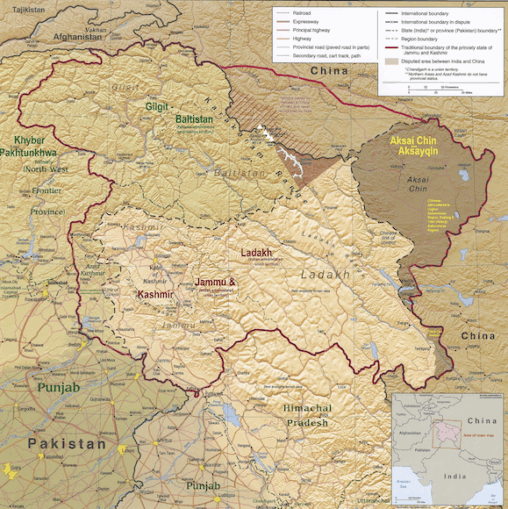
The disputed Kashmir region,
CIA/Fowler & Fowler – Public domain
Why so? Because of a complex history rooted in the partition of 1947 and the conflict that followed between India and Pakistan. At the time of partition, princely states like Jammu and Kashmir had the option to join either New Delhi or Islamabad.
Upon the transfer of power on 15 August 1947, Sir Hari Singh, the Maharajah of Kashmir and a Hindu, decided his state would stay independent – despite a majority Muslim population leaning towards Pakistan.
By the middle of the following October, the resulting tensions reached the point where North-West Frontier tribesmen invaded Kashmir from Pakistan.
Sir Hari first asked the Pakistani government to stop the tribesmen, but he received no satisfactory reply. He then called on the British for assistance, but as our authority had lapsed, there was nothing we could do. Then he appealed to Indian Prime Minister Pandit Nehru, who accepted the temporary accession of Kashmir into the Indian state pending a vote by the Kashmiri people.
Indian airborne troops and an armoured column entered Kashmir and drove the tribesmen back along the road to Pakistan. At the time, Mr Krishna Menon, the Indian High Commissioner in London, commented:
“We went to the defence of the people of Kashmir at a critical moment, and not an hour too early. The invaders were heavily armed and came over on foot and in vehicles and had use of large numbers of transport vehicles and immense quantities of petrol. The Pakistan Government has done nothing to obstruct this invasion. Indeed, it appears to have connived at, if not aided it. Our army is not an army of occupation. It will be withdrawn when peace is established. The future of Kashmir will be decided by the people.”
His contemporary, Mr Habib I. Pahimtoola, High Commissioner for Pakistan, countered:
“Our Prime Minister [Mohammad Jinnah] has suggested that the whole matter should be brought before the United Nations at once. And they should appoint representatives to stop the fighting in order that there should be an impartial administration until the plebiscite is held. The United Nations should be in control of the area. Kashmir was occupied by Indian forces without consultation with Pakistan.
My Government has repeatedly sought a conference with the Government of India to arrange a peaceful settlement. The Indian Government flouted the idea. It seems obvious that the Indian Government are determined to force a military decision on Kashmir by eliminating the voice of the Muslim population by force.”
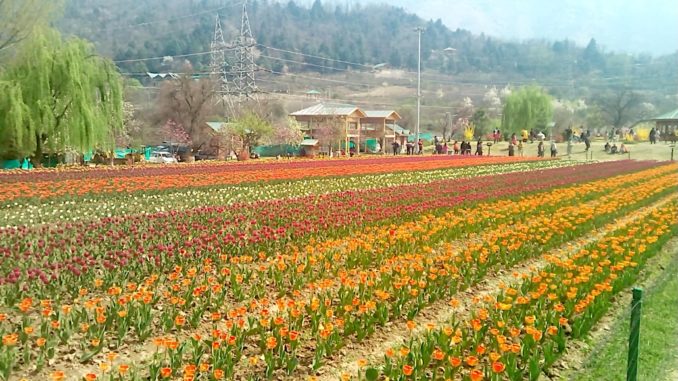
© Always Worth Saying 2025, Going Postal
The United Nations did broker a ceasefire, but not before the outbreak of the first Indo-Pak war that lasted from 1947 until 1949. It was the UN agreement that resulted in the Lines of Control which divided Kashmir into areas administered by India and Pakistan
It was in 1962 that China gained control over Aksai Chin after a border war with India, adding a third player to the territorial dispute.
These divisions reflect ongoing national claims, military standoffs, and international diplomacy, all of which have kept Kashmir fragmented and divided.
The following year, 1963, Pakistan ceded a portion of northern Kashmir to China through a bilateral agreement known as the Sino-Pakistan Agreement. This territory, called the Trans-Karakoram Tract (or Shaksgam Valley), is located in the Gilgit-Baltistan region of Pakistani-administered Kashmir.
The transfer was formalised as part of efforts to resolve the disputes between China and Pakistan, heightened by China’s brief war with India in 1962. At the time, Pakistan and China were seeking closer strategic ties, in part because of a mutual tension with India. The agreement stated that the Pakistan/China boundary was a “provisional” demarcation and could be subject to future revision pending a final settlement of the Kashmir dispute.
However, India objected to the agreement, arguing that since the entire region of Jammu and Kashmir is by law part of India, Pakistan had no right to give away any portion of it. India maintains that the cession was illegal and void. Despite its provisional wording, the 1963 agreement solidified Chinese control over the Trans-Karakoram Tract, further complicating the geopolitical landscape.
Hence, six decades later, Chinese missiles and aircraft supplied to the Pakistan Air Force shoot down French-supplied aircraft during the latest round of fighting.
Recent conflicts between India and Pakistan in Kashmir have been marked by a series of military skirmishes, cross-border shelling, and political escalations, heightened since 2016, and by no coincidence the year after Hindu nationalist Narendra Modi became Prime Minister of India.
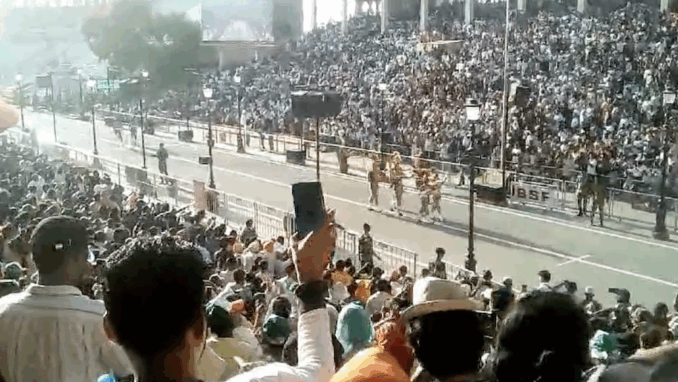
© Always Worth Saying 2025, Going Postal
Serving as Prime Minister since 26 May 2014 and re-elected in 2019 and again in 2024, Modi is the first Prime Minister since the aforementioned Nehru to secure three consecutive terms.
One of the key flashpoints in Mr Modi’s time was the Uri attack in September 2016, when militants attacked an Indian Army base near the LoC, killing 19 soldiers. In events echoed in recent weeks, India responded with “surgical strikes” across the LoC targeting alleged terrorist bases in Pakistan-administered Kashmir. This marked a shift in India’s posture, signalling a willingness to take more direct military action.
Tensions escalated further in February 2019, after a suicide bombing in Pulwama, in Indian-administered Kashmir, killed 40 Indian paramilitary personnel. The Pakistan-based group Jaish-e-Mohammed claimed responsibility for the attack. In response, India launched an airstrike in Balakot, Pakistan, claiming to target a terrorist training camp. Pakistan retaliated with airstrikes of its own and shot down an Indian Mig-21, capturing Group Captain Abhinandan Varthaman, who was later returned.
Later in August 2019, the Indian Government revoked Article 370 of its constitution, which granted special autonomy to Jammu and Kashmir. Condemning this move, Pakistan downgraded diplomatic ties and expelled the Indian High Commissioner.
India’s decision was followed by a heightened military presence, restrictions on communication, and curfews in the region, which Pakistan criticised as human rights violations. Although no full-scale war followed, the LoC saw frequent ceasefire violations and civilian casualties on both sides. In 2021, both countries agreed to a renewed ceasefire along the LoC, which reduced cross-border firing.
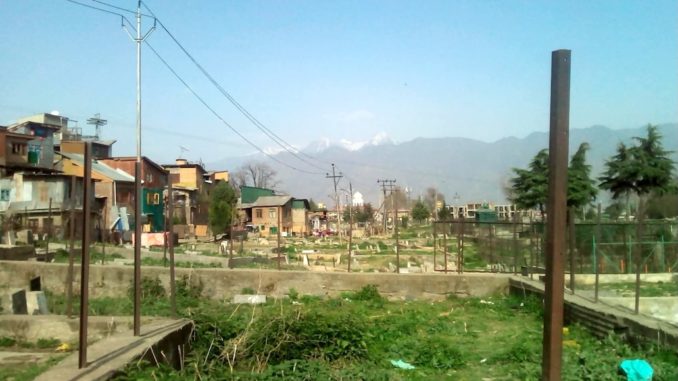
© Always Worth Saying 2025, Going Postal
However, the broader Kashmir dispute remains unresolved, and the potential for renewed conflict persists, fuelled by periodic militant attacks, political provocations, and mutual distrust between the two nations.
Sure enough, tensions flared again on 22 April 2025, with 26 people murdered when Muslim terrorists opened fire on a group of domestic tourists visiting the popular beauty spot of Pahalgam. This picturesque town in the Himalayas is often described as the “Switzerland of India”.
The resulting ‘back and forward’ escalated into a brief but intense conflict with missile strikes and retaliatory actions. Codenamed “Operation Sindoor” by the Indians, thier forces targeted bases in Pakistan – resulting in at least one French-built Rafale being shot down by a Chinese-made anti-aircraft missile (we are led to believe).
Pakistan responded with its own operations against Indian targets. A fragile truce was brokered, with both sides claiming victory. The situation remains tense. Although the informed observer is forced to conclude that, this being a funny colour on the map, it’s to be expected that hostilities will recommence in this beautiful part of the world.
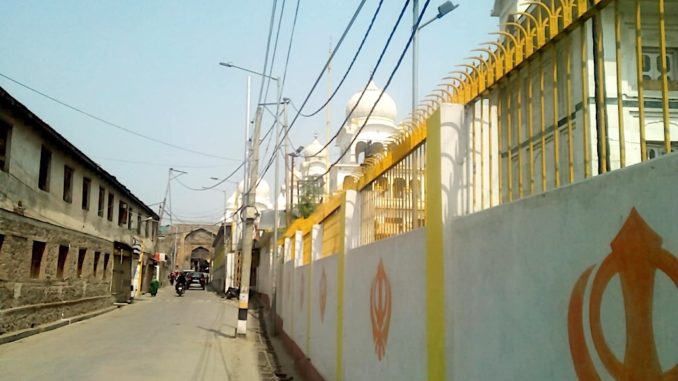
© Always Worth Saying 2025, Going Postal
© Always Worth Saying 2025



